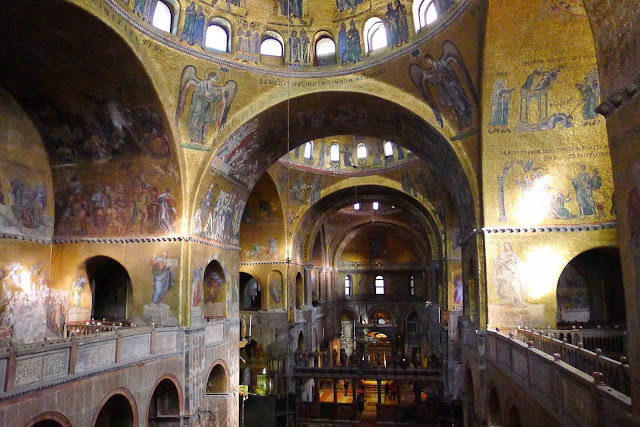Trinity Lavra: Russia's Most Important Monastery
An integral part of WHY I travel is my personal desire to visit and pray in as many spiritual centers as I can. Christian, Buddhist, Shinto, Muslim, Hebrew, I personally believe that each faith offers wisdom, guidance, and philosophies to help us be what we were meant to be: good human beings and dependable people.
In Moscow, I had the privilege of visiting the Russian people's most important monastery and spiritual center, the Russian Orthodox Church of Trinity Lavra of St. Sergius.
* Located almost two hours from downtown Moscow, the Trinity Lavra of St. Sergius can be found in the town of Sergiyev Posad.
* And it is the center of religious pilgrimage for devotees from all over the Russian Federation.
* This grand mural welcomes all pilgrims into the monastery complex. Holy saints, kings, and clergymen bid you blessings from the Lord.
* The complex is made up of a series of churches, chapels, shrines, and other religious buildings.
* And in the grand practice of the Orthodoxy, each building is ornately and uniquely decorated, colored, and adorned.
* St. Sergius was a great spiritual leader and monastic reformer from the medieval period of Russia.
* He is regarded as Russia's most highly venerated saint, and is buried here in the monastery.
* Prayers and periods of quiet make the long cues more meaningful.
* Now THAT'S an epic flaming sword!
* Inside the monastery's most holy of churches, which kind of reminded me of the Basilica of the Nativity in Bethlehem.
* The Iconostasis, a wall of icons and religious paintings found at the focal point of the Church, is a staple in Orthodox Christianity.
* As well as tombs and shrines of Saints, Patriarchs, and other Holy Men, including that of Anthony the Metropolitan of Moscow pictured above wrapped in a green shroud.
* Much like adherents of the Muslim, Jewish, and more conservative Christian faiths, women of the Orthodoxy cover their heads out of modesty and respect for God.
* Paintings depicting iconic scenes in the lives of saints adorn all the walls.
* The gang's all here!
* While Roman Catholics have the crucifix front and center their places of worship, the monastery had theirs towards the back; the one here resembling the scene found in the Church of the Holy Sepulchre in Jerusalem.
* The Russian Orthodox Church is the dominant faith throughout the Russian Federation, as well as several former countries within the Soviet Union.
* The Russian Orthodox is part of the Eastern Orthodox Church as one of its "autocephalous" churches; meaning there is no hierarchy beyond that of the Bishops, with all Bishops being recognized as equals.
* The Eastern Orthodox Church and Roman Catholic Church differ in that the Orthodoxy does not recognize the legitimacy of the Pope's claim to be the head of the Christian faith.
* Though both Orthodox and Roman Catholic Churches can claim that they are directly descended from the Church established by Jesus Christ through his disciples, starting out as one church.
* The split between the Orthodoxy and Roman Catholic Churches happened in 1054 AD, and is referred to as the East-West Schism.
* Since 1054, Roman Catholicism led by the Pope came to be the predominant faith in Western Europe: France, Spain, Britain, Austria, Germany, Scandinavia, and all their colonies (including the Americas), with its center in Rome.
* While the Orthodoxy became the predominant faith in Eastern Europe: Greece, Bulgaria, Romania, Russia, the Balkans, and the ancient lands of the Bible: Alexandria, Antioch and Jerusalem, with its center in Constantinople (now Istanbul).
* The Roman Catholics then further split into Catholic and various Protestant groups (Anglicans, Lutherans, Methodists, Baptists, etc) throughout the centuries, leading to the world we know now.
* Obviously this is an oversimplification of the differences between the Orthodox and Catholics.
* But truth be told, both great faiths have a lot more in common than they have differences.
* It's one of the reasons why I find the history of Christianity so fascinating.
* Dad enjoying the souvenir shopping as much as the praying, touring and picture taking.
* On the way home, we stopped by this traditional Russian country house.
* Imagining life before smartphones, 24/7 internet connectivity, and processed food.
* The road ahead, full of adventure and promise.








































Comments
Post a Comment